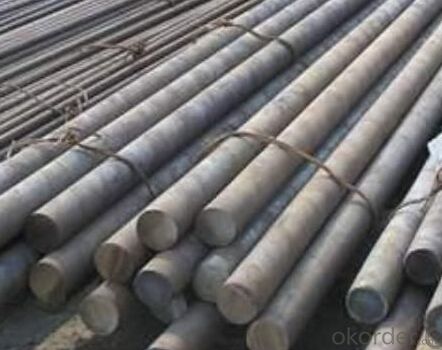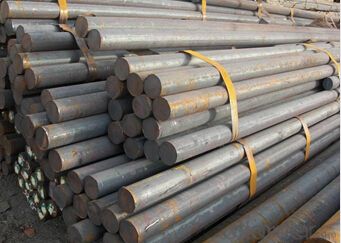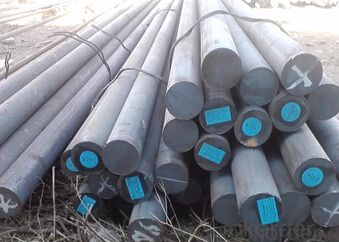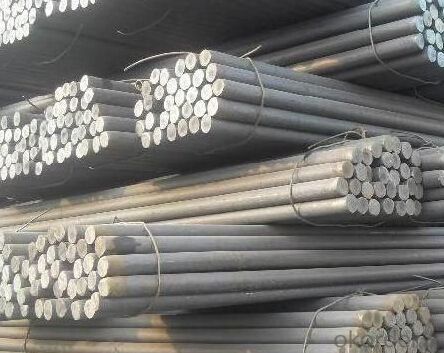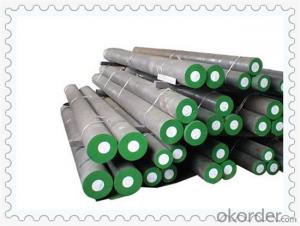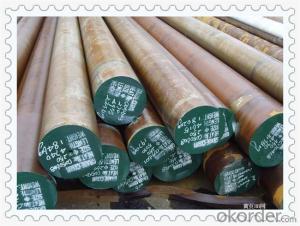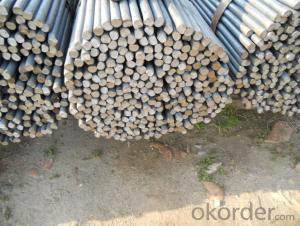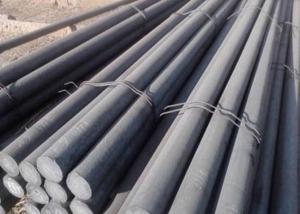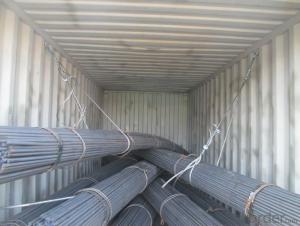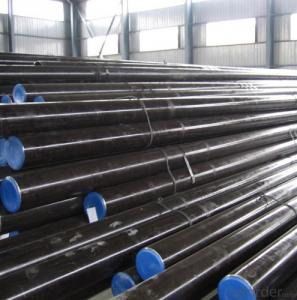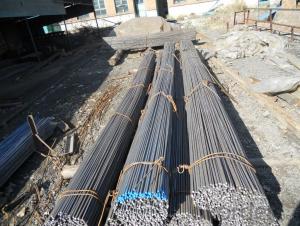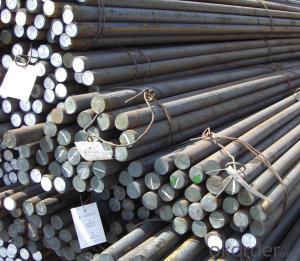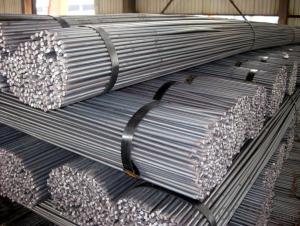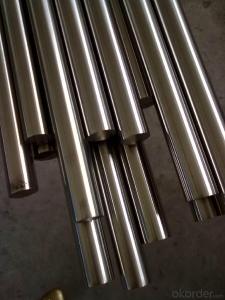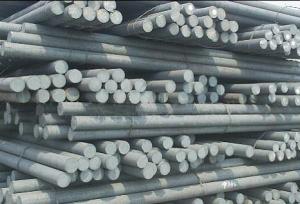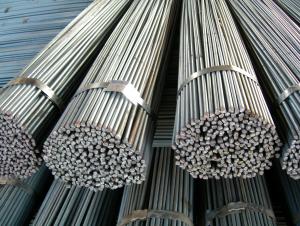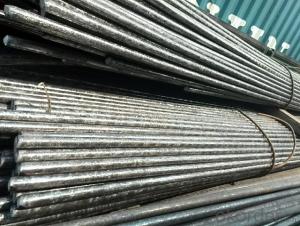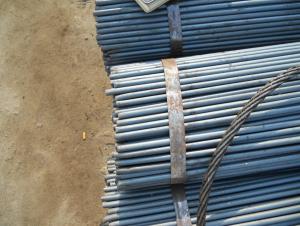Chinese Standard High Prime Round Bar Steel
- Loading Port:
- China Main Port
- Payment Terms:
- TT or LC
- Min Order Qty:
- -
- Supply Capability:
- -
OKorder Service Pledge
OKorder Financial Service
You Might Also Like
Product Description:
OKorder is offering Chinese Standard High Prime Round Bar Steel at great prices with worldwide shipping. Our supplier is a world-class manufacturer of steel, with our products utilized the world over. OKorder annually supplies products to European, North American and Asian markets. We provide quotations within 24 hours of receiving an inquiry and guarantee competitive prices.
Product Applications:
Chinese Standard High Prime Round Bar Steel are ideal for structural applications and are widely used in the construction of buildings and bridges, and the manufacturing, petrochemical, and transportation industries.
Product Advantages:
OKorder's Steel Chinese Standard High Prime Round Bar Steel are durable, strong, and resist corrosion.
Main Product Features:
· Premium quality
· Prompt delivery & seaworthy packing (30 days after receiving deposit)
· Corrosion resistance
· Can be recycled and reused
· Mill test certification
· Professional Service
· Competitive pricing
|
Specifications of Chinese Standard Round Bar
1. Grade: Q195, Q235, Q345
2. Diameter: 6mm-150mm
3. Length: 6m, 9m, 12m or as customer’s request
4. Tolerance: Within ±5% for weight; ±2mm for diameter
5. Note: The price can be better is the quantity is good
6. Chemical composition
Alloy No | Element (%) | ||||
C | Mn | S | P | Si | |
Q195 | 0.06-0.12 | 0.25 | ≤0.05 | ≤0.045 | ≤0.3 |
Q235 | 0.12—0.20 | 0.3—0.7 | ≤0.045 | ≤0.045 | ≤0.3 |
Q345 | ≤0.2 | 1.00-1.60 | ≤0.045 | ≤0.045 | ≤0.55 |
Usage and Applications of Chinese Standard Round Bar
1. Chinese standard steel bar is often used where large amounts of steel need to be formed, for example as structural steel.
2. And we can use this kind of product on the performance of the mechanical parts if the demand is not very high.
3. Steel round bar is used in construction and a large number of architectural and engineering structures.
Packaging & Delivery of Chinese Standard Round Bar
Packaging Detail: All goods are packed in bundle with steel strips and shipped by break bulk vessel or container (depend on target market and different ports)
Delivery Detail: 45 days
Trade terms: FOB, CFR, CIF
MOQ: 25 tons per specification; we can negotiate the quantity if the specification is normal or we have stock of one specification.
Weight: The price invoicing on theoretical weight basis or actual weight basis depends on customer’s request.
Shipment: The shipment of bulk break or container is depends on customer’s request and the situation of the port of destination.
Documents given: Full set of original clean on board bill of lading; Original signed commercial invoice; Original packing list; Policy of insurance; Certificate of origin and what the target market needs.
Production Flow of Chinese Standard Round Bar
1. The common processes are preheated forging quenching, dual refinement solution process, cooling quenching and isothermal quenching. We use heat treatment for dual refinement solution process.
2. Material prepare (billet) — heat up — rough rolling — precision rolling — cooling — packing — storage and transportation
Characteristics of Chinese Standard Round Bar
1. The steel in which the main interstitial alloying constituent is carbon in the range of 0.12–2.0%.
2. As the carbon percentage content rises, steel has the ability to become harder and stronger through heat treating; however it becomes less ductile.
3. Quality should be in conformity with the specification of the manufacturer. Quantity and packing conditions should be in conformity with the term in the contract.
4. Regardless of the heat treatment, higher carbon content reduces weld ability. In carbon steels, the higher carbon content lowers the melting point.
FAQ:
Q1: Why buy Materials & Equipment from OKorder.com?
A1: All products offered byOKorder.com are carefully selected from China's most reliable manufacturing enterprises. Through its ISO certifications, OKorder.com adheres to the highest standards and a commitment to supply chain safety and customer satisfaction.
Q2: How do we guarantee the quality of our products?
A2: We have established an advanced quality management system which conducts strict quality tests at every step, from raw materials to the final product. At the same time, we provide extensive follow-up service assurances as required.
Q3: How soon can we receive the product after purchase?
A3: Within three days of placing an order, we will begin production. The specific shipping date is dependent upon international and government factors, but is typically 7 to 10 workdays.
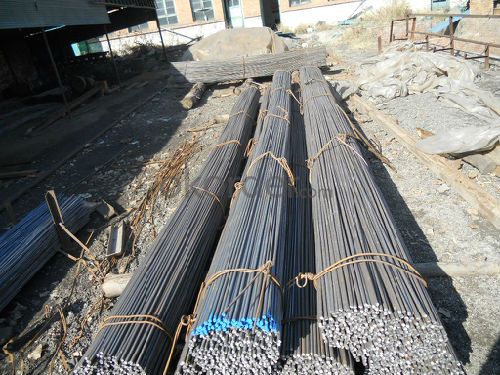
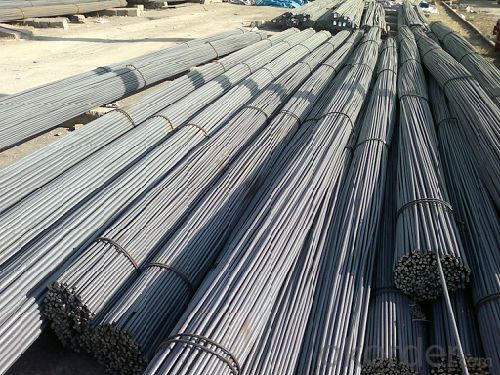
- Q: How are steel round bars stored and transported?
- Steel round bars are typically stored and transported using a variety of methods to ensure their safety and ease of handling. When it comes to storage, steel round bars are often stored in warehouses or outdoor yards. In these facilities, the bars are usually stacked horizontally on racks or placed on steel stands to prevent any damages or deformations. It is important to keep the bars off the ground to avoid contact with moisture and potential rusting. To facilitate transportation, steel round bars are commonly bundled together using steel straps or chains. These bundles are designed to keep the bars tightly secured and prevent any movement during transit. Additionally, the bundles are often labeled with relevant information such as the type of steel, dimensions, and weight to ensure proper identification and handling. When it comes to transportation, steel round bars can be shipped using various modes such as trucks, trains, or ships. Trucks and trains are commonly used for shorter distances, while ships are preferred for longer hauls, especially for international shipments. Depending on the size and weight of the bars, they can be loaded onto flatbed trucks or placed in shipping containers for transportation. During transportation, it is crucial to avoid any potential impacts or mishandling that could cause damage to the bars. Proper securing and bracing techniques are employed to minimize any movement or shifting of the bars in transit. This can include using blocking and bracing materials to prevent the bars from rolling or sliding. In summary, steel round bars are stored in warehouses or outdoor yards and are often bundled together using steel straps or chains. They are transported using trucks, trains, or ships, ensuring proper securing and bracing to prevent damage. By following these storage and transportation practices, steel round bars can be delivered to their destinations safely and efficiently.
- Q: How do you calculate the weight of a steel round bar based on its length and volume?
- To calculate the weight of a steel round bar based on its length and volume, you would need to know the density of steel, which is approximately 7.85 grams per cubic centimeter. First, calculate the volume of the round bar using the formula for the volume of a cylinder (pi * radius squared * length). Then, multiply the volume by the density to obtain the weight of the steel round bar.
- Q: How do steel round bars compare to other materials like aluminum or titanium?
- Steel round bars have numerous advantages over materials like aluminum or titanium. Firstly, steel is renowned for its exceptional strength and durability, possessing a high tensile strength that enables it to withstand heavy loads and resist deformation under stress more effectively than aluminum or titanium. This makes steel round bars an excellent option for applications necessitating robust structural support. Moreover, steel boasts a higher melting point in comparison to aluminum, rendering it more suitable for high-temperature environments. It can endure extreme heat without compromising its strength, making it the preferred choice for industries such as construction, manufacturing, and automotive. Furthermore, steel round bars offer a cost-effective solution. Generally, steel is more affordable than titanium, making it a more budget-friendly alternative for a variety of projects. Additionally, steel is readily available and easily sourced, while obtaining titanium can be more challenging and manufacturing it can be more expensive. Nevertheless, it is imperative to acknowledge that aluminum and titanium possess their own unique advantages. Aluminum, for instance, is lightweight and exhibits excellent corrosion resistance, making it the preferred material for industries like aerospace, marine, and automotive. Conversely, titanium is renowned for its exceptional strength-to-weight ratio and corrosion resistance. It is commonly utilized in applications requiring high strength and low weight, such as aircraft components and medical implants. In conclusion, steel round bars offer unparalleled strength, durability, and cost-effectiveness when compared to aluminum or titanium. However, choosing the appropriate material ultimately depends on the specific requirements of the project, as each material possesses distinct advantages and applications.
- Q: What are the common sizes of steel round bars?
- The common sizes of steel round bars vary, but some frequently used diameters range from 1/4 inch to 12 inches.
- Q: What is the difference between a circle and round steel continuous casting
- Round steel drawn from a continuous casting is called a round billet; the rolled round steel is called a bar.
- Q: What are the different types of heat treatment for steel round bars?
- There are several types of heat treatment for steel round bars, including annealing, normalizing, quenching, tempering, and case hardening.
- Q: What is the difference between carbon steel and alloy steel round bars?
- Both carbon steel and alloy steel round bars find extensive use across various industries, although they vary in terms of their composition and properties. In particular, carbon steel round bars consist predominantly of iron and carbon, with small amounts of other elements present. Depending on the grade, the carbon content typically ranges between 0.05% and 2.0%. These bars are renowned for their robustness and hardness, rendering them suitable for applications demanding high durability and resistance to wear. Additionally, carbon steel round bars possess excellent machinability, allowing them to be easily shaped and molded into desired forms. Nevertheless, they may exhibit limited resistance to corrosion, necessitating the application of additional protective coatings in corrosive environments. In contrast, alloy steel round bars are produced by incorporating various alloying elements into carbon steel. Such elements encompass manganese, chromium, nickel, molybdenum, and others. The inclusion of these elements augments the properties of the steel, including enhanced strength, toughness, and resistance to wear and corrosion. Alloy steel round bars are frequently selected for applications demanding specific characteristics, such as resistance to high temperatures, a high strength-to-weight ratio, or improved machinability. In conclusion, the primary disparity between carbon steel and alloy steel round bars lies in their composition and resulting properties. Carbon steel round bars primarily consist of iron and carbon, offering commendable strength and hardness; however, they may exhibit limited resistance to corrosion. Conversely, alloy steel round bars incorporate supplementary alloying elements, bolstering specific properties like increased strength, toughness, and corrosion resistance. The selection between carbon steel and alloy steel round bars hinges upon the precise requirements of the application at hand.
- Q: What are the common sizes and dimensions of steel round bars?
- Different applications and requirements dictate the availability of steel round bars in a range of sizes and dimensions. The most prevalent sizes and dimensions for steel round bars encompass diameters spanning from 1/4 inch to 24 inches. These diameters correspond to the nominal size of the round bar, which approximates its cross-sectional diameter. Concerning dimensions, standard lengths of 20 feet or 6 meters are typically available for steel round bars. However, custom lengths can be manufactured upon request. The length of the round bar plays a crucial role as it determines the amount of material accessible for cutting, shaping, and fabrication. Furthermore, the weight of steel round bars may differ based on their size. Steel is typically evaluated by its weight per unit length, commonly specified in pounds per foot or kilograms per meter. The weight of a steel round bar is influenced by its diameter, length, and the specific type of steel employed. It should be noted that the aforementioned sizes and dimensions are industry standards, but there may be variations depending on the particular manufacturer or supplier. Hence, it is always advisable to consult the manufacturer's catalog or directly contact them to obtain accurate and up-to-date information regarding the sizes and dimensions of the steel round bars they offer.
- Q: How do you prevent corrosion on steel round bars?
- There are various effective methods available for preventing corrosion on steel round bars: 1. Coating: A commonly employed technique involves applying a protective coating, such as paint or epoxy, on the steel round bars. This coating acts as a barrier between the steel and the external environment, preventing contact with moisture and corrosive substances. 2. Galvanization: Another effective approach is to galvanize the steel round bars by adding a layer of zinc on the surface. This zinc layer acts as a sacrificial anode, corroding instead of the steel in case of damage. This method is particularly beneficial for preventing corrosion in outdoor or marine environments. 3. Stainless steel: Utilizing stainless steel round bars with a high chromium and nickel content is another effective way to prevent corrosion. The presence of these elements creates a passive, protective film on the steel's surface, acting as a barrier against corrosion. 4. Proper storage: It is crucial to store the steel round bars in a dry and well-ventilated area to prevent corrosion. Moisture, especially in humid surroundings, can accelerate the corrosion process. Therefore, it is important to ensure that the round bars do not come into direct contact with water or any other corrosive substances. 5. Regular maintenance: Regularly inspecting the steel round bars for corrosion signs and promptly addressing any issues can prevent further damage. This may involve cleaning the bars using appropriate methods and applying protective coatings when necessary. By implementing these preventive measures, the occurrence of corrosion on steel round bars can be significantly reduced, ensuring their durability and preserving their structural integrity.
- Q: How are steel round bars used in the automotive industry?
- Steel round bars are commonly used in the automotive industry for a variety of applications due to their strength, durability, and versatility. One of the main uses of steel round bars in the automotive industry is for the production of crankshafts. Crankshafts play a crucial role in converting the reciprocating motion of the pistons into rotational motion, powering the vehicle. Steel round bars are ideal for this application as they offer high tensile strength, excellent fatigue resistance, and the ability to withstand high torque loads. Steel round bars are also used in the manufacturing of axles. Axles are responsible for transferring power from the engine to the wheels, supporting the weight of the vehicle, and providing stability. Steel round bars provide the necessary strength and rigidity required to handle the heavy loads and forces experienced by the axles. Additionally, steel round bars are utilized in the production of suspension components such as tie rods and sway bars. Tie rods are crucial for steering and maintaining proper alignment, while sway bars help to control body roll and improve handling. Steel round bars are preferred for these applications because they offer excellent torsional strength, allowing them to withstand the forces and stresses encountered during steering and suspension movements. Furthermore, steel round bars find use in the production of transmission shafts. Transmission shafts are responsible for transmitting power from the engine to the wheels via the gearbox. Steel round bars are well-suited for this application due to their high strength, resistance to bending, and ability to handle the rotational forces and torque generated by the engine. In summary, steel round bars are widely used in the automotive industry for various applications such as crankshafts, axles, suspension components, and transmission shafts. Their superior strength, durability, and versatility make them an ideal choice for these critical components, ensuring the safety, performance, and reliability of vehicles.
Send your message to us
Chinese Standard High Prime Round Bar Steel
- Loading Port:
- China Main Port
- Payment Terms:
- TT or LC
- Min Order Qty:
- -
- Supply Capability:
- -
OKorder Service Pledge
OKorder Financial Service
Similar products
Hot products
Hot Searches
Related keywords






